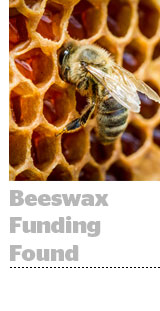
Beeswax raised $15 million in Series B funding which it will use to support connected TV and win marketer clients. As it expands to achieve these initiatives, Beeswax will double its current headcount of 65 by the end of this year.
The software-as-a-service DSP last raised funds in 2016. The new round brings total funding to $28 million.
RRE, Foundry, and Amasia led the round, and You & Mr Jones participated.
Despite a 150% revenue increase this year and an investor-friendly SaaS business model, it wasn’t easy for Beeswax to secure funding. “There is enormous skepticism about ad tech,” said CEO Ari Paparo.
In contrast to its competitors, Beeswax charges an annual software-as-a-service fee while most other DSPs charge percentage of media.
The high CPMs commanded for connected TV inventory – as high as $30 to $40 – will make a flat monthly fee more appealing to clients, who want to save money.
“Because CPMs are so high, we think a typical DSP charging 15% is just ripping people off,” Paparo said.
But to get that connected TV business, Beeswax, which already buys online video, must accommodate for new variables.
“What’s complicated about connected TV is that the targeting and reporting varies a lot between channels. The data availability varies,” Paparo said. One platform might not support user identifiers, another supplies IP addresses and another truncates them, for example.
Marketer direct
Beeswax is staying away from agencies because that sector is already dominated by The Trade Desk, which has a $6 billion market cap, and because the software-as-a-service business model doesn’t appeal to media clients.
Instead, the company is setting sights on marketers moving programmatic in-house. Its customer base to date includes Twitch, Cognitiv, Social Point, Dailymotion, TreSensa, and iotec.
“Marketers want more transparency, and they want more working dollars. Plus, they often have workflows or data lakes that need an integrated, custom approach that we specialize in,” Paparo said.
For example, data scientists at a large CPG client correlated offline sales to multiple seconds of ad viewability – not just the standard MRC minimum. A traditional DSP doesn’t allow a marketer to optimize toward a precise, higher viewability. Beeswax can.
Privacy? No problem.
Paparo doesn’t think increased user privacy concerns will impact Beeswax, even if behavioral targeting comes under threat.
Regulation and Apple’s restrictions might mean there’s less data over time, Paparo said, but programmatic won’t die.
“Other techniques for media planning and execution that are more statistical or broad will come into fashion,” he predicted.
While the first decade of programmatic involved rapid growth and many companies that crashed-and-burned, Paparo thinks Beeswax will face a calmer environment in coming years.
“Programmatic is going to settle down,” he said. “It will become a well-understood part of a marketer’s toolkit, more analogous to easier channels like search and email. There won’t be as much vendor switching and complexity.”
Founded in 2014, the company plans to be profitable in 2020, Paparo said.
This post was syndicated from Ad Exchanger.


More Stories
Outback Steakhouse Will Replace Your Flakiest Friend With a Paid Actor for One Night Only
Question Everything
TBWA\Group NZ appoints Simon McCorkindale as Tech Director